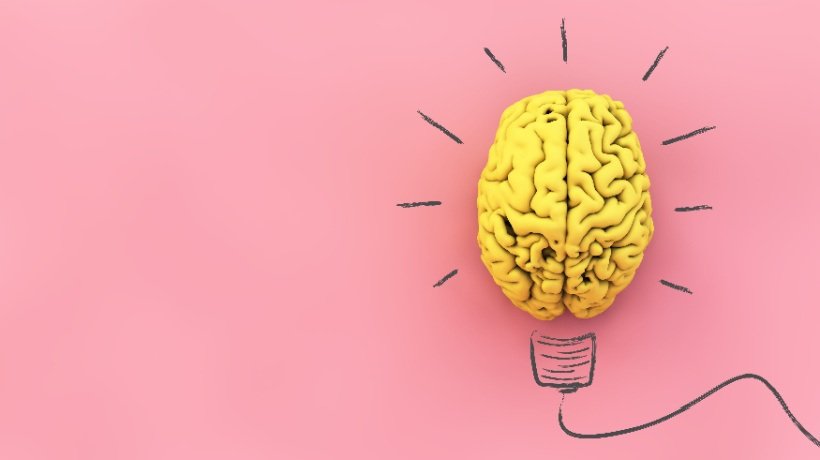
Why Should Educators Pursue Neuroscience Literacy?
It is said that the brain is “plastic,” meaning that it remains malleable throughout our lifetime due to its ability to adapt to freshly encountered stimuli by creating new neural connections. Even after reaching its final developmental stage, the human brain doesn’t stop changing; this presents an interesting challenge when it comes to teaching and learning across different life stages. As such, educators and eLearning professionals must be equipped with expert knowledge to harness the brain’s plasticity and provide tailor-made pedagogical experiences to a diverse range of learners. Cultivating neuroscience literacy, or neuroliteracy, is fundamental to making this possible.
In this article, we will focus on the importance of neuroliteracy among educators and the need to debunk widespread neuromyths in the education community to ensure optimized pedagogical approaches.
Reasons Why Neuroliteracy Is Essential For Education Professionals
The concept of neuroliteracy is gaining more prominence as reality becomes more fast-paced than ever and distractibility rises to unprecedented levels. How are educators, Instructional Designers, and other eLearning professionals meant to approach an absent-minded audience fatigued with information? Soon, as more people realize that neuroscientific research may contain the answer to this peril, neuroliteracy will become a coveted attribute within the field, further establishing neuroeducation as a powerful countermeasure to various educational tribulations.
By cultivating neuroliteracy, educators can provide learning experiences that stick by leveraging insights into essential cognitive functions, processes, and systems. By exploring correlations between emotion, attention, and retention, ways to encourage neurogenesis to promote lifelong learning, and other specialized knowledge based on neuroscientific findings, education leaders can tailor instruction and material to reduce distractibility and enhance overall performance within their classrooms.
Finally, acquiring neuroscientific knowledge will empower educators to create neuroinclusive learning environments where all learners can reach their full potential. It’s no wonder that the blossoming field of neuroeducation will only grow more popular in the next few years, equally informing innovative research, day-to-day practices, and future educational policies.
Neuroliteracy As Remedy: The Need To Debunk Neuromyths In The Education Community
The field of education abounds with theories, tried-and-tested practices, and conceptions on how to achieve optimal learning results. However, many of these popular approaches have been subjects of speculation among the education community. While several arguments within academic discourse corroborate or reject these widespread ideas, we’ve reached a point where further rigorous scientific, evidence-backed research is required.
In this context, the need of the hour lies in addressing neuromyths, these misconceptions about the brain’s abilities and processes that emerged several decades ago and still inform a great deal of contemporary pedagogical approaches. Due to misinformation or misunderstanding, these neuromyths have spread, acting as roadblocks to truly effective instructional and/or learning practices. While some neuromyths possess some truth to them, with current and future advancements in brain science and research, most are well on their way to being debunked.
The Learning Styles Myth
For example, one of the most common misconceptions in the field is that people have distinct learning styles, meaning that there’s only one potent sensory modality of learning for each individual. The learning styles myth has been widely embraced, backed by a range of theories (like VARK). Yet, there’s no substantial scientific evidence to attest to its validity. [1] Studies have concluded that, while learners may have preferences in how they want to receive information, adjusting instruction to fit with these preferences does not produce better performance or outcomes.
Essentially, the so-called visual, auditory, reading/writing, or kinesthetic learners are just learners with specific tastes. Sure, people learn differently—but that doesn’t mean they can’t learn using different modalities than their preferred ones. Learning is an extremely complex process involving multiple sensory inputs, so let’s not put our learners in boxes. We can simply try providing them with multifaceted learning experiences that engage the senses and activate multiple brain regions to create robust neural connections that solidify knowledge acquisition.
Therefore, instead of promoting unsubstantiated best practices with potentially deteriorating effects on learner success, it’s essential for educators to demystify these common neuromyths in order to create effective pedagogical interventions. For that to happen, they need neuroliteracy because it allows them to cut through the noise, evaluate the information, engage in current research, and ultimately embrace insightful, evidence-backed practices with optimized results.
How To Cultivate Neuroliteracy
The following list contains some key areas to focus on during your journey to cultivating neuroscience literacy.
1. Consulting Subject Matter Experts
Collaboration with neuroscientists, psychologists, researchers, and other Subject Matter Experts (SMEs) provides educators with valuable insights into how the brain functions and how learning takes place. SMEs offer unique, research-backed perspectives on domain-specific matters that aren’t always included in introductory courses. They can translate highly specialized scientific concepts into simpler terms, making them accessible to those who are not familiar with neuroscientific terminology, further enhancing retention and applicability. Not to mention that direct contact with experts also allows education professionals to tailor their own journeys to neuroliteracy, pursuing topics that are relevant to their specific audience and covering areas that trouble or interest them.
To facilitate partnerships with SMEs, educators can participate in joint research programs, workshops, or conferences, and establish collaborations between educational institutions and brain research facilities. In addition, they can become liaisons to bring SMEs directly into their classrooms and demonstrate to their learners important facts about the brain. Ideally, this collaboration will yield further advancements in the neuroeducation field, revealing new avenues to knowledge sharing, cross-disciplinary research, and scientific breakthroughs.
2. Educational Psychology Training
The field of neuroeducation recognizes that emotion and mental state have an immense impact on cognitive processes, especially learning-related ones. For successful learning endeavors, it’s important not to overlook this correlation and turn to science to find out how to leverage it to everyone’s benefit. This makes educational psychology a key focus area for cultivating neuroliteracy.
Through educational psychology training, educators can design effective learning interventions that create positive links between learners and the material, encourage engagement, and improve the quality of the learning experience. In addition, incorporating wellness methods—like emotional regulation techniques—into educational curricula can show learners how taking care of their overall well-being can help them overcome roadblocks and boost their performance. Lastly, mastering concepts of educational psychology will help educators identify and address counterproductive patterns in their own approaches, allowing them to provide holistic neuroeducation-based practices that change the game for themselves and their learners.
3. Keeping Up With Neuroscience Updates And Discoveries
To cultivate neuroliteracy, educators and eLearning professionals should delve into specialized professional development efforts by utilizing various resources within the neuroscience field. Contemporary neuroscientific advancements and discoveries have the power to redefine existing educational practices and inspire innovations, further propelling a thirst for continuous learning in educators and learners alike.
Specifically, concepts like neurogenesis, brain plasticity, information processing, and nervous system functions can greatly benefit the formulation of powerful learning experiences by demonstrating to educators how to comply with the brain’s innate learning systems. In addition, leveraging this knowledge is integral to producing inclusive and accessible learning environments, specifically tailored to accommodate and support neurodiversity. Finally, keeping up with neuroscientific updates will only encourage the field of neuroeducation to grow, with fresh insights and innovations informing additional advancements in the educational sector.
4. Reflective Practice
Practicing reflection requires educators to critically analyze their own conceptions, pedagogical approaches, and overall impact on student learning. Regular reflection practice brings a wealth of benefits to learning settings, from optimizing curriculum creation to enhancing the broader classroom experience of learners.
Of course, reflection should incorporate various neuroeducation and neuroscientific principles in order to improve results within and beyond the classroom. For example, for successful reflective practice, educators and eLearning professionals should teach their students the concept of metacognition—a fundamental pillar of both disciplines—and show them how to incorporate it into their journeys in a way that will serve their growth. Mindfulness practices, like meditation, and journalling, can also bolster the already great impact of reflective practice by building self-awareness and helping us get acquainted with the powerful feedback loop between our body and mind.
Conclusion
The only tool we need to reach the next milestone or conquer the next challenge is our brain. Decoding its secrets requires effort but, thankfully, emerging fields like neuroeducation light the path on how to harness its immense potential. Cultivating neuroliteracy among education leaders for the creation of productive, growth-oriented learning spaces where learners can exceed expectations is a powerful first step. The next requires us to rise to the occasion—are we ready?
Reference:
[1] The Modality-Specific Learning Style Hypothesis: A Mini-Review





